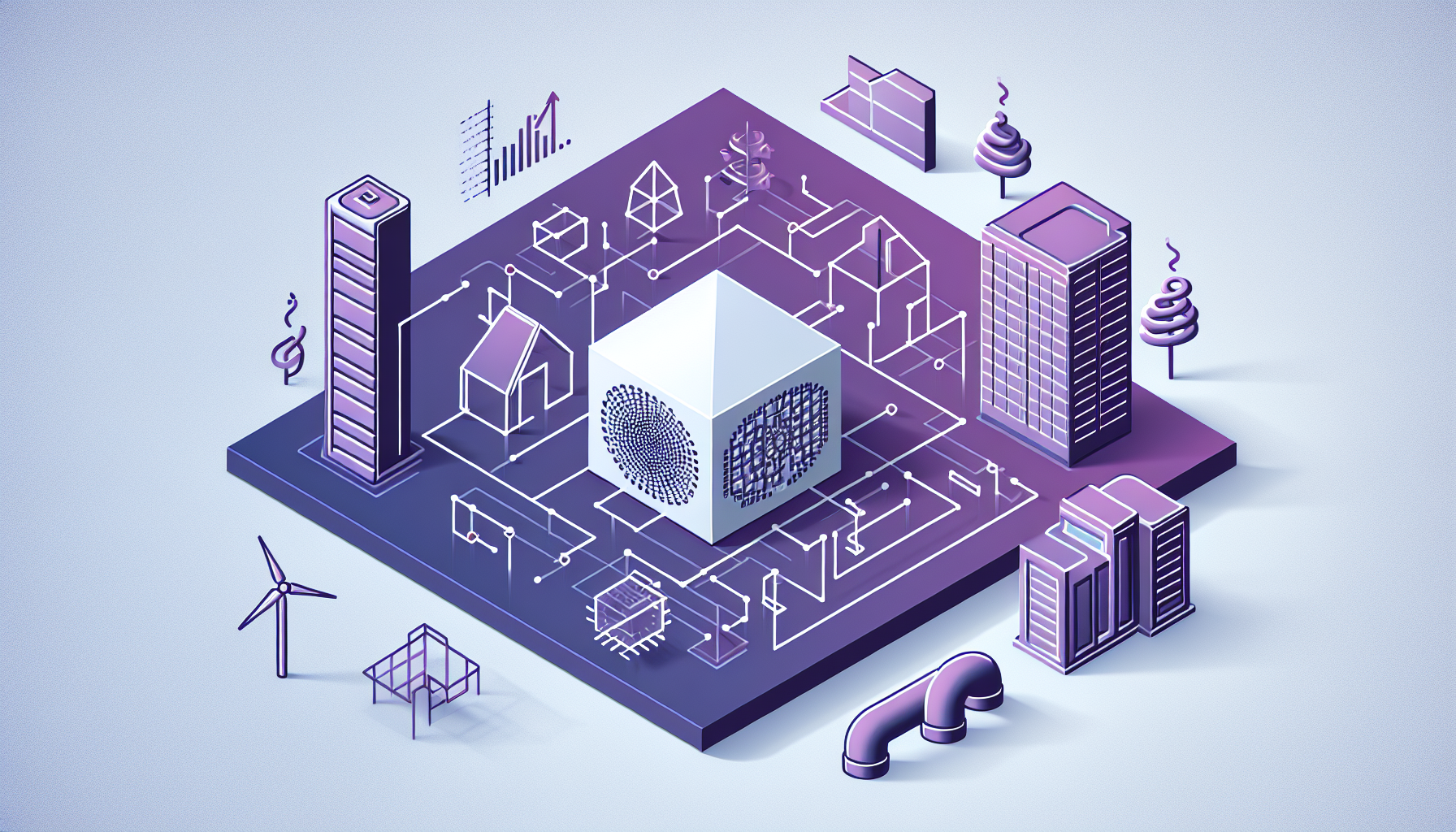Using load calculation software can help you cut down on energy costs. This tool makes sure your HVAC systems are the right size. It boosts performance and lowers energy bills.
It looks at important things like building size, direction, insulation, how many people use it, and the equipment. With local weather data, it makes sure your HVAC can handle extreme weather. This keeps the inside of your building just right.
Getting the load calculations right stops problems with equipment that’s too big or too small. This means your system works better, uses less energy, costs less, and lasts longer. By using load calculation software, you’re making a big move towards a greener, cheaper HVAC system for your building.
Understanding the Importance of HVAC Load Calculation
HVAC load calculation is key to making heating and cooling systems work better in buildings. It helps figure out the right size and power of HVAC equipment needed. This ensures your indoor temperatures stay comfortable without wasting energy.
What is HVAC Load Calculation?
HVAC load calculation is a way to find out how much heating and cooling a building needs. It looks at the building’s size, insulation, windows, how many people use it, and the local weather. This makes sure your HVAC system fits your specific needs perfectly.
Why Accurate Load Calculation Matters
Getting the load calculation right is crucial for your system to work well and save energy. If your HVAC system is the right size, it uses less energy and cuts down your energy bills. But if it’s too big or too small, you could face problems:
- Oversized systems: Use too much energy and raise your bills
- Undersized systems: Can’t keep up, leading to poor performance and possible breakdowns
The Impact on Energy Efficiency and Cost Savings
Getting your HVAC load calculation right affects how efficient and cost-effective your system is. With the right size, you can:
- Use less energy
- Pay lower bills
- Make your equipment last longer
- Keep your home more comfortable
| Benefits of Accurate Load Calculation | Impact on System Performance |
|---|---|
| Optimal equipment sizing | Improved efficiency and longevity |
| Reduced energy consumption | Lower operating costs |
| Better temperature control | Enhanced comfort for occupants |
| Proper humidity management | Improved indoor air quality |
Using advanced load calculation software gives you precise results. This leads to big improvements in your HVAC system’s performance and efficiency.
Introduction to Load Calculation Software
Load calculation software has changed how we design HVAC systems. It makes figuring out heating and cooling needs for buildings easier. Engineers can now quickly go through complex data and make smart choices.
Old-school manual calculations are now a thing of the past. Today’s load analysis tools work smoothly with building design software. This lets designers input 3D shapes and details easily. It helps create HVAC systems that are both accurate and save energy.
Using load calculation software has a big plus: it can handle lots of data. It looks at internal gains, weather in specific locations, and building materials. This detailed look leads to more accurate load calculations and better system performance.
| Feature | Benefit |
|---|---|
| 3D Geometry Input | Accurate spatial representation |
| Real-time Data Analysis | Up-to-date design conditions |
| Custom Assembly Creation | Flexibility in design options |
| Detailed Report Generation | Comprehensive documentation |
As HVAC software gets better, it’s adding new tech like artificial intelligence and machine learning. These new features make the software predict better, leading to HVAC designs that are more efficient and save money.
Key Features of Advanced HVAC Load Calculation Tools
Advanced HVAC load calculation tools bring new features that change how systems are designed and work. They make the design process more accurate, efficient, and help in making better decisions for HVAC projects.
Integration with Building Information Modeling (BIM)
BIM integration makes designing HVAC systems easier. Engineers can get building data straight from 3D models. This cuts down on mistakes and saves time. It also makes working together better for architects, engineers, and contractors.
Real-Time Data Analysis Capabilities
Real-time analysis lets HVAC pros make quick changes as needed. They can see how the system is doing, how much energy it uses, and how many people are there right now. This helps make operations better and handle changes in demand well.
Artificial Intelligence and Machine Learning Integration
AI in HVAC and machine learning change how load calculations work. These technologies look at past data to guess what will happen next and make systems work better. They spot trends, suggest ways to save energy, and do complex calculations on their own.
| Feature | Benefits | Impact on Energy Efficiency |
|---|---|---|
| BIM Integration | Improved accuracy, faster design process | 10-15% reduction in design errors |
| Real-Time Analysis | Quick adjustments, better response | 5-8% energy savings through optimization |
| AI and Machine Learning | Predictive maintenance, automated optimization | 15-20% increase in overall system efficiency |
By using these advanced features, HVAC experts can make systems that work better, save money, and adjust to new needs and environmental changes.
How Load Calculation Software Improves HVAC System Design
Load calculation software changes the game in HVAC system design. It gives you exact info on what equipment and ductwork you need. This makes designing energy-efficient systems more accurate and efficient. You can easily set up different HVAC systems, like single-zone, multi-zone, and zonal ones.
This software is great at doing ventilation calculations. It makes sure your HVAC meets local laws and best practices. Plus, it lets you adjust the system for the best energy use.
For designing systems for buildings and water, this software is a star. It lets you pick from many loops and equipment options. This flexibility is key for making systems that save energy and fit the building’s needs.
| Feature | Benefit |
|---|---|
| Accurate sizing | Prevents over/undersizing, improves efficiency |
| Multi-system configuration | Enables versatile HVAC designs |
| Ventilation calculations | Ensures regulatory compliance |
| Customizable options | Allows for tailored, energy-efficient solutions |
Using load calculation software in HVAC design leads to better, more efficient solutions. It makes designing easier and saves energy in the long run. This tech is a big win for your wallet and the planet.
Optimize HVAC Systems for Energy Cost Reduction
Making your HVAC system more efficient is a great way to cut down on energy costs. Using load calculation software helps you find ways to save energy, pick the right equipment, and make your system work better.
Identifying Energy-Saving Opportunities
Load calculation software looks at your building’s details and system needs to find ways to save energy. It takes into account things like insulation, how often the building is used, and the local weather to recommend ways to save energy.
- Evaluate building envelope performance
- Assess current HVAC system efficiency
- Identify peak load periods
Selecting Energy-Efficient Equipment
Choosing the right equipment is key to making your HVAC system more efficient. Load calculation software gives you the right size information, so you pick the perfect equipment for your building.
| Equipment Type | Energy Efficiency Rating | Potential Savings |
|---|---|---|
| High-Efficiency Furnace | 95% AFUE | 15-20% on heating costs |
| Energy Star Air Conditioner | 18 SEER | 20-30% on cooling costs |
| Variable Speed Heat Pump | 21 SEER / 10 HSPF | 25-40% on HVAC costs |
Optimizing System Performance
Make your HVAC system work better by optimizing its performance. Load calculation software lets you use features like economizers, heat recovery, and adjusting supply air temperatures. These strategies can greatly reduce energy costs and make your system more efficient.
By using these strategies, you can save a lot on energy while keeping your building comfortable. Regularly using load calculation software helps your HVAC system stay efficient as your building changes over time.
The Role of Load Calculation in HVAC Retrofits
HVAC retrofits are key to making buildings more energy efficient and cutting costs. Load calculation software is a big help in this effort. It helps you decide on the best upgrades for your system.
Getting accurate load calculations is crucial for retrofits. They tell you the right size and type of equipment you need. With advanced software, you can precisely figure out your heating and cooling needs now and in the future.

Load calculation tools let you test out different retrofit plans. This means you can see the costs and benefits of various energy-saving upgrades. You can pick the best options for your building.
The software looks at many factors, such as:
- Building envelope changes
- Occupancy patterns
- Equipment efficiency ratings
- Local climate data
This ensures your HVAC retrofits lead to big energy savings and better comfort.
| Retrofit Scenario | Estimated Energy Savings | Payback Period |
|---|---|---|
| High-efficiency HVAC unit | 20-30% | 3-5 years |
| Smart thermostat installation | 10-15% | 1-2 years |
| Ductwork sealing and insulation | 15-20% | 2-3 years |
Using load calculation in your retrofit plan means upgrades fit your building perfectly. This way, you get the most energy savings and long-term cost benefits.
Implementing Smart Controls with Load Calculation Data
Smart HVAC controls make your heating and cooling systems work better and smarter. They use load calculation data to save energy and make you more comfortable. Let’s see how smart technology can improve your HVAC system a lot.
Integrating IoT Devices
IoT devices add smarts to HVAC systems. They watch temperature, humidity, and how many people are around in real-time. This info helps your system change settings on its own. You get a more comfy space and use less energy.
Predictive Maintenance Strategies
Predictive maintenance looks at data to guess when things might break. Smart HVAC controls check how well things are working and warn you before big problems happen. This way, you can fix things before they get worse, saving time and money.
Dynamic Load Balancing
Load balancing makes sure your HVAC system works its best. Smart controls use current data to spread heating and cooling evenly in your building. This stops some units from working too hard while others do nothing, saving energy and making everyone more comfortable.
| Feature | Benefit | Impact on Efficiency |
|---|---|---|
| IoT Integration | Real-time monitoring and adjustment | Up to 20% energy savings |
| Predictive Maintenance | Reduced downtime and repair costs | 15-30% lower maintenance expenses |
| Dynamic Load Balancing | Even distribution of heating/cooling | 10-25% improved energy efficiency |
Using these smart control methods can cut energy costs and boost your HVAC system’s performance. The cost of smart tech is worth it for the savings and better comfort for everyone in the building.
Case Studies: Successful HVAC Optimization Projects
HVAC optimization case studies show how real-world projects save energy and improve systems. They prove that load calculation software can change HVAC systems for the better. This leads to big cost cuts and better comfort.

A commercial office in New York City is a great example of HVAC success. By using advanced load calculation software, energy use dropped by 30%. The project included:
- Analyzing existing HVAC equipment performance
- Identifying areas of energy waste
- Optimizing air distribution systems
- Installing smart thermostats and sensors
In Texas, a healthcare facility also saw big changes. The goal was to keep temperatures and humidity right while cutting energy costs. The results were:
- 15% less in annual energy costs
- Better indoor air quality
- More comfortable patients
- Less need for equipment maintenance
A project in California shows how load calculation software can save money and be efficient. Builders used the software to design an HVAC system that:
- Cut initial costs by 20%
- Lowered monthly energy bills by 25%
- Improved home comfort
- Met strict energy codes
| Project Type | Location | Energy Savings | Key Improvements |
|---|---|---|---|
| Commercial Office | New York City | 30% | Smart controls, optimized air distribution |
| Healthcare Facility | Texas | 15% | Improved air quality, reduced maintenance |
| Residential Construction | California | 25% | Lower equipment costs, improved comfort |
These projects show the strength of HVAC optimization with load calculation software. By looking at building needs and environmental factors, you can save a lot of energy. This makes buildings more comfortable for everyone.
Overcoming Challenges in HVAC Load Calculation
HVAC pros face many challenges when designing efficient systems. Ensuring data accuracy and managing system complexity are key issues. These can affect the performance of HVAC installations. By understanding these challenges, you can improve your heating and cooling solutions.
Ensuring data accuracy is a big challenge. You need precise measurements of building size, insulation, and how often it’s used. Wrong data can make systems too big or too small, wasting energy and making people uncomfortable.
Complex systems make load calculations harder. Modern buildings have many zones, changing occupancy, and different equipment loads. You need special software and a good understanding of building physics to handle this.
To tackle these challenges, consider these strategies:
- Invest in high-quality measurement tools to improve data accuracy
- Use advanced load calculation software that can handle complex building designs
- Conduct regular training sessions to keep your team updated on best practices
- Collaborate with architects and engineers to gather comprehensive building data
- Perform sensitivity analyses to identify critical input parameters
By using these strategies, you can make your HVAC load calculations more accurate. This leads to more efficient systems that save energy and make people more comfortable.
| Challenge | Impact | Solution |
|---|---|---|
| Data Accuracy | Incorrect system sizing | Use precision measurement tools |
| System Complexity | Difficulty in calculations | Employ advanced software |
| Building Variations | Inconsistent performance | Conduct zone-by-zone analysis |
Best Practices for Using Load Calculation Software
Using HVAC software the right way is key to getting the most out of load calculation tools. These practices ensure your results are accurate, your systems work well, and you save on energy costs. Let’s look at how to make the most of load calculation software.
Data Input Accuracy
Getting your data right is the first step to reliable load calculations. Make sure to measure your building’s dimensions and check all your input. Verify insulation levels, window details, and how often the space is used. The better your input, the better your results will be.
Regular Software Updates
Keep your software up to date to get the newest features and keep your calculations precise. HVAC technology changes fast, and updates often bring better algorithms and energy-saving standards. You can set your software to update automatically or check for updates regularly to stay current.
Collaboration with Design Teams
Working together with your team is crucial for making sure load calculations fit with the building’s design. Share your data and findings with architects, engineers, and contractors. Regular meetings can help make sure your HVAC plans work well with other building systems, leading to better and cheaper solutions.
| Best Practice | Impact | Implementation Tips |
|---|---|---|
| Data Accuracy | Improved system sizing | Use digital tools for measurements |
| Software Updates | Enhanced features and accuracy | Schedule monthly update checks |
| Team Collaboration | Optimized building design | Hold weekly cross-functional meetings |
By following these best practices for HVAC software, you’ll get more accurate data, use the latest features, and work better with your team. These steps will help you design more efficient HVAC systems and cut energy costs.
Future Trends in HVAC Load Calculation and Optimization
The future of HVAC technology is exciting and efficient. Smart building systems are leading this change. They will work with advanced load calculation software for better comfort and energy use.
Machine learning is becoming a big part of load calculation’s future. This tech will make predicting heating and cooling needs more accurate. It will use past data to adapt to new conditions, making HVAC systems smarter.
Cloud-based services are also important for HVAC optimization. These services let you monitor and adjust your HVAC in real-time from anywhere. This makes managing your HVAC system easier, leading to better performance and saving energy.
As these HVAC technology trends grow, we’ll see more precise load calculations and better system efficiency. This means big energy cost cuts. The future of HVAC is bright, with smarter systems that keep us comfortable while using less energy.





0 Comments